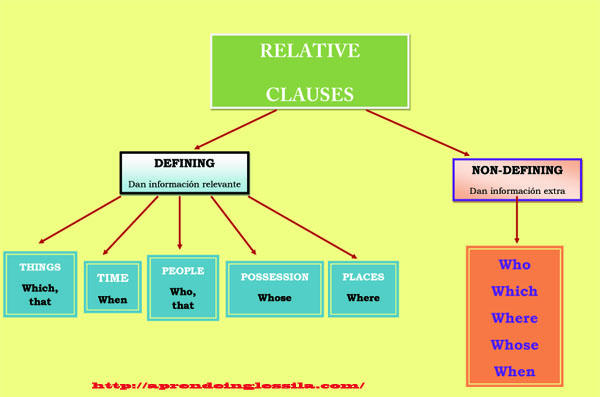Defining relative clauses
Defining relative clauses

We use defining relative clauses to give essential information about someone or something – information that we need in order to understand what or who is being referred to. A defining relative clause usually comes immediately after the noun it describes.
We usually use a relative pronoun (e.g. who, that, which, whose and whom) to introduce a defining relative clause (In the examples, the relative clause is in bold, and the person or thing being referred to is underlined.):
They’re the people who want to buy our house.
Here are some cells which have been affected.
They should give the money to somebody who they think needs the treatment most.
[talking about an actress]
She’s now playing a woman whose son was killed in the First World War.
Spoken English:
In defining relative clauses we often use that instead of who, whom or which. This is very common in informal speaking:
They’re the people that want to buy our house.
Here are some cells that have been affected.
Subject or object
The relative pronoun can define the subject or the object of the verb:
They’re the people who/that bought our house. (The people bought our house. The people is the subject.)
They’re the people who/that she met at Jon’s party. (She met the people. The people is the object.)
Here are some cells which/that show abnormality. (Some cells show abnormality. Some cells is the subject.)
Here are some cells which/that the researcher has identified. (The researcher has identified some cells. Some cells is the object.)



Comentarios
Publicar un comentario